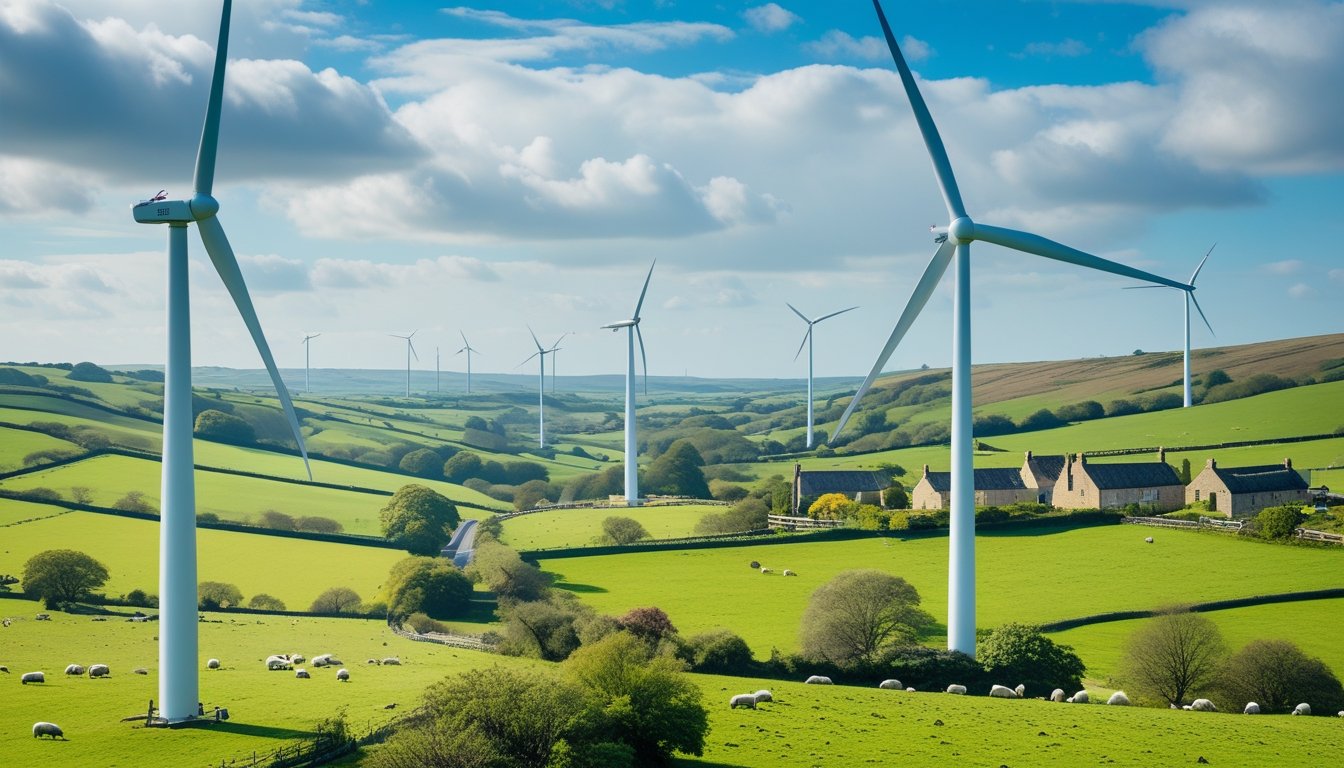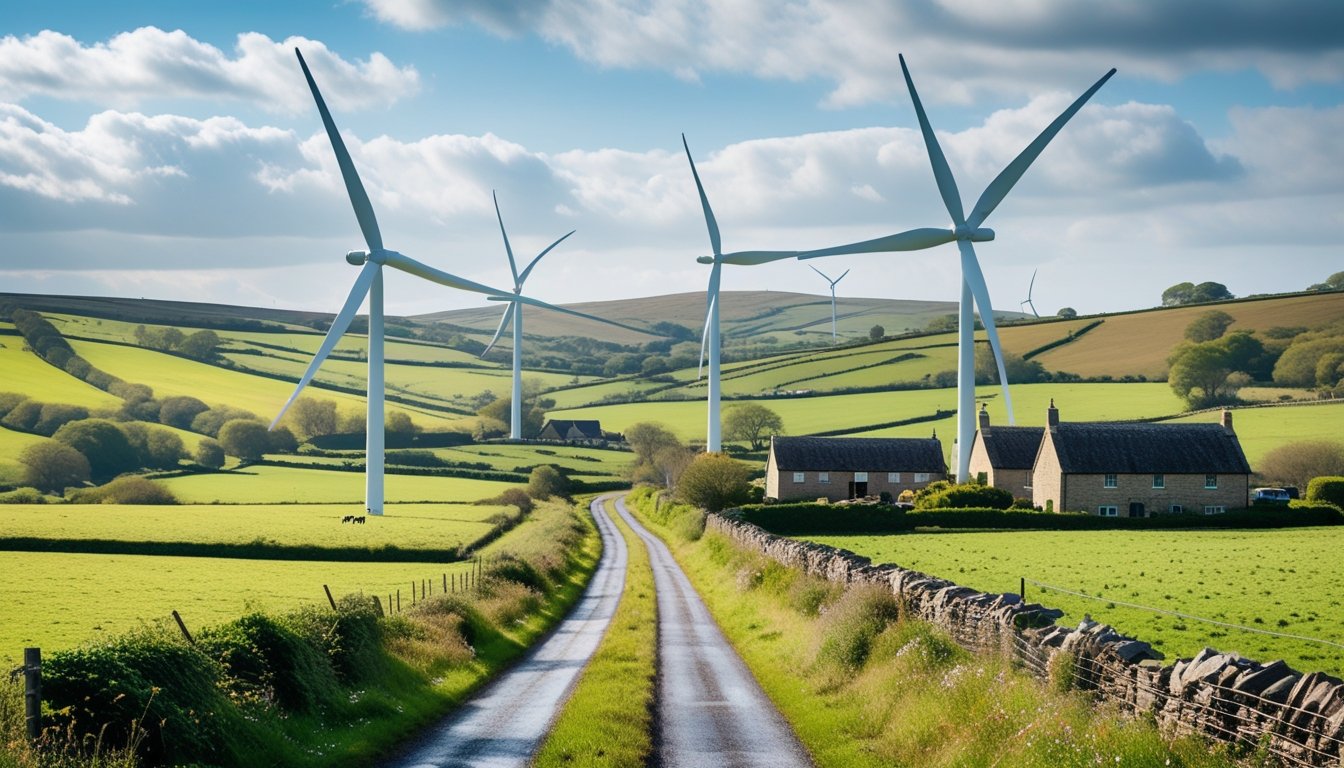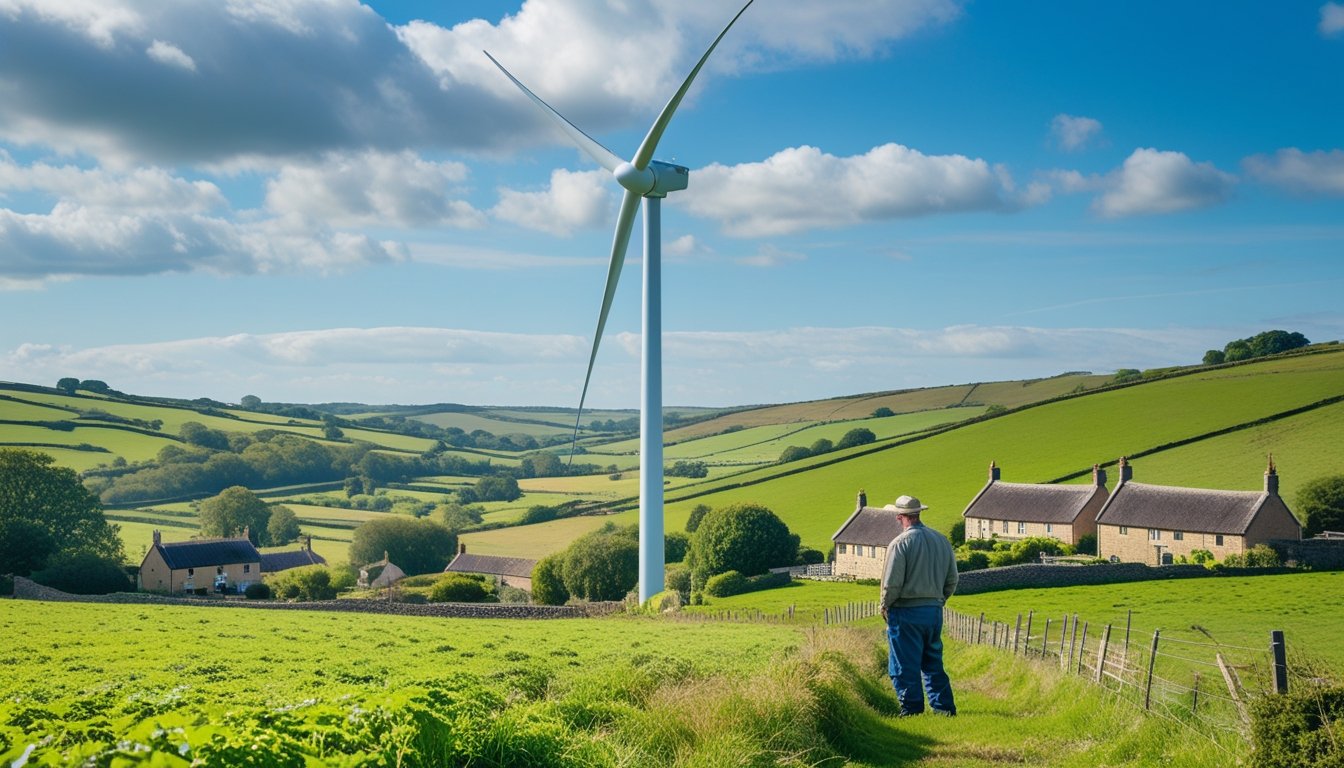Late updated: 26 Sep 2025 14:09
Written by: Oliver Bennett
Exploring Wind Power Solutions for UK Rural Areas: Sustainable Development
Exploring the potential of wind power in rural UK areas offers a compelling opportunity for sustainable growth and energy independence. By embracing wind energy, rural communities can drive local economic development while significantly contributing to national climate goals. As we investigate this transformation, we see how wind farms are not just about harnessing renewable energy but also providing financial rewards and fostering community engagement.

Rural regions in the UK are uniquely positioned to benefit from wind power projects, thanks to their vast open spaces and consistent wind levels. These projects create employment opportunities in installation and maintenance, helping reduce unemployment and invigorate local economies. The initiative can be transformative, yet it also brings challenges such as infrastructure integration and community acceptance.
As we examine the current landscape, policy support plays a crucial role in promoting wind energy solutions. Engaging with local stakeholders and understanding specific community needs ensure successful integration into rural settings. These efforts can lead to a more sustainable and energy-resilient future for rural communities across the UK.
Key Takeaways
- Wind energy supports economic and environmental goals in rural UK.
- Local factors and policy are critical to successful wind power integration.
- Community involvement enhances wind project acceptance and impact.
Key Considerations for Wind Power Solutions in Rural UK

Wind power solutions in rural areas of the UK involve several essential factors to ensure their effectiveness and acceptance. These include assessing wind resources, selecting appropriate technology, considering economic and social impacts, integrating with existing land use, and fostering community involvement and ownership.
Wind Resource Assessment and Technology Options
Accurate wind resource assessment is critical to maximise the efficiency of wind turbines. Measurement techniques help in determining the most suitable locations for installing wind farms, ensuring optimal energy generation. We must also consider technology options like vertical-axis turbines, which can be more suitable for varying wind conditions. Floating wind farms present an innovative solution for offshore sites where traditional onshore methods may face space limitations. Balancing these technologies with site-specific conditions is vital.
Economic and Social Impacts on Rural Communities
Wind energy projects have the potential to significantly impact rural communities economically and socially. They create employment opportunities, both during construction and ongoing operations, thus boosting local economies. However, it is vital to consider potential housing pressures or demographic shifts as people may move to the area for jobs. Our responsibility includes managing any local opposition by addressing concerns about how windfarms might alter landscapes or affect property values.
Integration with Agriculture and Land Use
Farmers may diversify income streams through wind power initiatives. By leasing portions of their land for wind turbines, they can generate additional revenue without significantly affecting agricultural activities. We should plan the placement of turbines to avoid disrupting existing farming operations. Understanding the interplay between energy production and agriculture ensures that land is used effectively, contributing to the sustainability of rural England's landscape.
Community Involvement and Ownership Models
Engaging local communities from the outset of wind energy projects is crucial. Community power solutions ltd and similar initiatives offer models where communities have a financial stake in the wind farms, fostering local support and ownership. This involvement can increase social capital, as residents feel directly invested in the project's success. Ensuring that local populations benefit from reduced energy costs or shared profits can encourage widespread acceptance and cooperation.
Policy, Planning, and Local Factors Influencing Wind Energy Development

In exploring wind power solutions for UK rural areas, understanding the unique planning and policy frameworks is crucial. Various factors such as environmental impact, the role of local governance, and the influence of planning processes are central to successful windfarm implementation.
Planning Processes and Outcomes
Planning processes for wind energy projects are intricate, involving multiple stages and stakeholders. The appeal stage can significantly affect project timelines and outcomes. In the UK, the use of small area GIS datasets helps assess site suitability by evaluating factors like wind speeds and land use compatibility. Successful planning outcomes often depend on comprehensive environmental assessments and public support for wind energy, which tend to increase project acceptance and effectiveness.
Role of Environmental Impact and Equity
Assessing the environmental impact of windfarms is vital. These assessments gauge effects on local wildlife and habitats. Environmental equity considers the fair distribution of environmental benefits and burdens. We must ensure windfarm developments do not disproportionately affect certain communities. Public perception of these impacts can influence planning outcomes. Therefore, detailed evaluations are necessary, considering both environmental policies and societal impacts to maintain equitable development.
Local Governance, Participation, and Democratic Deficit
Local governance plays a pivotal role in shaping wind energy projects. High voter turn-out in local decisions often correlates with increased project legitimacy and acceptance. However, a local democratic deficit might emerge if citizens feel disenfranchised from the decision-making process. Engaging local communities through participation and consultations can bridge this gap, enhancing project support. A transparent planning process builds trust and strengthens community ties, essential for overcoming opposition.
Frequently Asked Questions

In exploring wind power for rural UK communities, numerous queries arise regarding incentives, environmental impact, regulatory requirements, and the role of different scales of wind projects. Addressing these concerns is essential for understanding wind power's potential in these areas.
What incentives are available to farmers for installing wind turbines on their property?
Farmers in rural UK areas can benefit from several incentives when installing wind turbines. These include financial compensation schemes, tax breaks, and government grants. Additionally, community benefits such as shared profits and local energy discounts can make the adoption of wind power more attractive economically.
How does the installation of wind turbines impact local wildlife and ecosystems in rural UK?
The impact on wildlife and ecosystems varies depending on location and turbine design. Proper site assessments and planning can assist in minimising adverse effects. Measures such as avoiding important wildlife habitats and implementing mitigation strategies help reduce potential harm to local flora and fauna.
What are the planning permission requirements for erecting wind turbines in the countryside?
Obtaining planning permission involves several steps, including environmental assessments and community consultations. Local councils often require detailed plans demonstrating minimal disruption to landscapes and adherence to regulatory standards. Each project must comply with national guidelines and local policies to ensure sustainable development.
How do wind power solutions compare with other renewable energy sources in terms of efficiency and cost for rural areas?
Wind power is generally cost-effective and efficient, especially in areas with consistent wind resources. Compared to solar energy, wind can often generate more power during less favourable weather conditions. While biomass and hydroelectric power can be viable, wind remains a competitive option due to falling installation costs and technological advancements.
What strategies exist for overcoming community resistance to wind farm developments?
Community resistance can be addressed through transparent communication, highlighting economic benefits and involving local stakeholders in planning. Providing clear information on environmental impacts and engaging with community leaders can foster acceptance. Benefit-sharing models, such as offering reduced energy tariffs, also play a crucial role in gaining support.
What is the role of small-scale versus large-scale wind projects in achieving the UK's renewable energy targets?
Both small-scale and large-scale wind projects are vital in reaching the UK's renewable energy goals. Large-scale projects contribute significantly to national energy supply, whereas small-scale initiatives can enhance local energy independence. Community-led small projects promote local involvement and energy resilience, complementing the larger national efforts.
